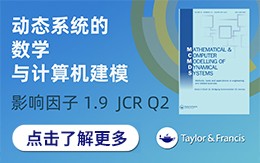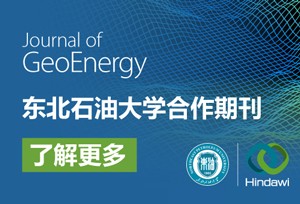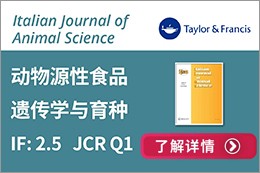-
Subjective vs. objective assessment of the economic impacts of light rail transit: The case of G:Link in Gold Coast, Australia J. Transp. Geogr. (IF 5.899) Pub Date : 2024-04-23 Liton Kamruzzaman
While the current discourse surrounding the economic impacts of light rail transit (LRT) predominantly leans on objective metrics, emerging signs point to a possible disparity between subjective perceptions and these objective evaluations. This study endeavours to fill this void by scrutinizing the impacts of the G:Link in Gold Coast, Australia on local businesses, prompted by anecdotal commentary
-
Spatiotemporal evolution of air cargo networks and its impact on economic development - An analysis of China's domestic market before and during the COVID-19 pandemic J. Transp. Geogr. (IF 5.899) Pub Date : 2024-04-23 Hang He, Hanjun Wu, Kan Wai Hong Tsui, Biao Wang, Xiaowen Fu
China's domestic air cargo network plays a crucial role in economic development by enabling the efficient and reliable transportation of goods, ensuring regional competitiveness, and supporting sustained economic growth. This study aimed to examine and analyse the spatiotemporal evolution of China's domestic air cargo network and structural configuration and its relationship with local economic development
-
Spatial allocation of heavy commercial vehicles parking areas through geo-fencing J. Transp. Geogr. (IF 5.899) Pub Date : 2024-04-17 Jishi Wu, Tao Feng, Peng Jia, Gen Li
-
Determining the number and location of micro-consolidation centres as a solution to growing e-commerce demand J. Transp. Geogr. (IF 5.899) Pub Date : 2024-04-17 Masoud Kahalimoghadam, Russell G. Thompson, Abbas Rajabifard
-commerce's rapid expansion has transformed consumer shopping habits and business operations. While it offers the potential to reduce customer trips, it has also contributed to increased vehicle kilometres travelled (VKT) by delivery vehicles, resulting in elevated greenhouse gas (GHG) emissions, especially in last-mile deliveries. This paper proposes a spatial approach to address the uncapacitated
-
Destination unknown: Examining wildfire evacuee trips using GPS data J. Transp. Geogr. (IF 5.899) Pub Date : 2024-04-17 Thomas J. Cova, Yuran Sun, Xilei Zhao, Yepeng Liu, Erica D. Kuligowski, Nima Janfeshanaraghi, Ruggiero Lovreglio
Effective wildfire evacuation planning requires understanding where evacuees are likely to travel and temporarily reside. Detailed information on evacuee destinations is a valuable input into critical decisions related to evacuation traffic control, shelter assignment, and return-entry planning. To improve our understanding of where evacuees stay, we analyzed GPS data generated by mobile devices from
-
Exploring the influence of social relations and knowledge of the urban environment on leisure travel J. Transp. Geogr. (IF 5.899) Pub Date : 2024-04-17 Benjamin Gramsch-Calvo, Kay W. Axhausen
Most leisure travel is motivated by interactions within one's social network, which influence the choice of activities undertaken in the city. In this paper, we employ a structural regression model to distinguish between the direct effect of social relations on leisure travel—measured as venue variety and activity space—and a complementary effect through the knowledge of the urban environment. The
-
An integrated approach for urban green travel environments: Planning factors, benefits and barriers as perceived by users and planners J. Transp. Geogr. (IF 5.899) Pub Date : 2024-04-17 Yu Liu, Megan Lynn Maurer, Trine Agervig Carstensen, Anne Margrethe Wagner, Hans Skov-Petersen, Anton Stahl Olafsson
Integrated urban infrastructures provide multiple benefits to people and society. Efforts to develop green spaces and active mobility infrastructures both share concerns about the environment and public health but are understudied in an integrated manner. This study focuses on this integration in core urban areas through urban green travel environments. The involvement of both lay and expert knowledge
-
Unpacking the cultural aspects of transport automation governance in Finland: An interview study J. Transp. Geogr. (IF 5.899) Pub Date : 2024-04-16 Janne J. Olin, Miloš N. Mladenović
The culture that governance networks uphold is an often-overlooked aspect in transport policy studies. Nonetheless, governance culture plays a major part in how governing is done in practice. This article explores the cultural elements that have constituted the Finnish governance approach to road transport automation. Through in-depth interviews with a range of governance actors, we identified several
-
Who uses transit in the journey to work? Multimodality, equity, and planning implications in México City J. Transp. Geogr. (IF 5.899) Pub Date : 2024-04-15 Dorian Antonio Bautista-Hernández, Alejandra Trejo Nieto
Increasing mobility needs in developing countries demand the coordination and development of robust urban transit systems. However, several factors lead to the emergence of fragile and disintegrated systems, where several subsystems work under different schemes of formality. In this context, transit travel tends to be highly multimodal, which at the trip level has been scarcely studied. In this study
-
Spatial-temporal identification of commuters using trip chain data from non-motorized mode incentive program and public transportation J. Transp. Geogr. (IF 5.899) Pub Date : 2024-04-13 Linchang Shi, Jiayu Yang, Jaeyoung Jay Lee, Jun Bai, Ingon Ryu, Keechoo Choi
Distinguishing commuters from non-commuters is important for transportation planning and traffic demand management. A framework to identify commuters using public transit is proposed based on a spatial-temporal clustering algorithm. The framework extracts commute trips by mining spatial-temporal travel patterns depending on whether the travelers' trip chains are complete. The commuting features in
-
Using shortest path routing to assess cycling networks J. Transp. Geogr. (IF 5.899) Pub Date : 2024-04-12 Reid Passmore, Kari Watkins, Randall Guensler
The lack of cycling infrastructure is a major deterrent to cycling for transportation in the U.S., yet planners and engineers may lack the tools to assess and communicate the potential network impacts of proposed cycling infrastructure. Without these tools, cycling infrastructure may be built ad hoc or where it is politically convenient, instead of where it would be most effective at improving mobility
-
How experiments with superblocks in Vienna shape climate and health outcomes and interact with the urban planning regime J. Transp. Geogr. (IF 5.899) Pub Date : 2024-04-11 Anna-Katharina Brenner, Willi Haas, Christian Rudloff, Florian Lorenz, Georg Wieser, Helmut Haberl, Dominik Wiedenhofer, Melanie Pichler
Superblocks are traffic-calmed neighborhoods that contribute to climate change mitigation and improve living and health conditions of inhabitants without requiring extensive reconstructions. This article investigates experiments with superblocks in Vienna (Austria) from initial discussion to the first experimental implementation. We use an integrated mixed-method approach: First, we examined potential
-
Detecting anomalous commuting patterns: Mismatch between urban land attractiveness and commuting activities J. Transp. Geogr. (IF 5.899) Pub Date : 2024-04-09 Zhaomin Tong, Ziyi Zhang, Rui An, Yaolin Liu, Huiting Chen, Jiwei Xu, Shihang Fu
Rapid urbanization has dramatically changed the urban spatial structures, causing a mismatch between residents' commuting activities and the optimal status of the current urban facility configuration. However, limited attention has been paid to detecting these mismatched commuting patterns and their associations with built environmental characteristics. To maximize the effectiveness of urban facility
-
Are transhipment ports more efficient in the Mediterranean Sea? Analysing the role of time at ports using DEA metafrontier approach J. Transp. Geogr. (IF 5.899) Pub Date : 2024-04-09 Julián Martínez-Moya, Amparo Mestre-Alcover, Ramón Sala-Garrido, Salvador Furió-Pruñonosa
In recent decades, port efficiency has been widely studied by evaluating the use of the physical factors related to the endowment of infrastructure. However, ports are service providers, so in the production of port cargo services, the time efficiency in port operations matters. In fact, it is a key factor of port competitiveness, especially when shipping lines come to making port choice decisions
-
Synergizing cycling and transit: Strategic placement of cycling infrastructure to enhance job accessibility J. Transp. Geogr. (IF 5.899) Pub Date : 2024-04-08 Lucas Spierenburg, Hans van Lint, Niels van Oort
Enabling cycling at the home side or at the activity side of transit trips has been recognized as a promising solution to address transit network discrepancies and enhance connectivity between residents and employment opportunities. However, this multimodal solution is conditional to bicycle parking and cycle lanes, and urban planners need tools to identify relevant locations for these infrastructures
-
Estimation of stops of last-mile delivery vehicles: An application in the food industry in the city of Santiago de Chile J. Transp. Geogr. (IF 5.899) Pub Date : 2024-04-06 Franco Basso, Matías Núñez, German Paredes-Belmar, Raúl Pezoa, Mauricio Varas
The study of vehicle stops in last-mile delivery has gained ground in the specialized logistics literature. An efficient last-mile delivery reduces distribution costs and mitigates negative externalities such as pollution and congestion. This paper estimates the stops of last-mile trucks that deliver food products in Santiago, Chile. The aim is to study last-mile delivery operations using a non-intrusive
-
A multi-modal analysis of the effect of transport on population and productivity in China J. Transp. Geogr. (IF 5.899) Pub Date : 2024-04-04 Bingyu Wu, David M. Levinson
This paper examines the impact of three modes of transport infrastructure, namely high-speed rail, highway, and aviation on population density and economic growth in China using a fixed effects model based on a panel data of 2847 counties from 2008 to 2019. The results indicate that transport infrastructure can contribute to regional agglomeration and productivity enhancement, with high-speed rail
-
On the dynamic vulnerability of an urban rail transit system and the impact of human mobility J. Transp. Geogr. (IF 5.899) Pub Date : 2024-03-31 Shouzheng Pan, Shuai Ling, Ning Jia, Yiliu Liu, Zhengbing He
Urban rail transit (URT) plays a pivotal role in facilitating human mobility within urban environments. It is significant to understand its vulnerability, i.e., the variation in capacity and demand when confronted with unexpected events, particularly operational disruptions. Although the network topology is generally fixed, the hourly-changing travel demand greatly impacts the actual vulnerability
-
Analyzing the urban-rural divide: Understanding geographic variations in charging behavior for a user-centered EVSE infrastructure J. Transp. Geogr. (IF 5.899) Pub Date : 2024-03-30 Tim Jonas, Gretchen A. Macht
Understanding charging behavior in relation to its geographic locale is crucial for fostering a user-centered and equitable electric vehicle supply equipment (EVSE) infrastructure. This study employs a comprehensive and multivariate approach to investigate the utilization of public Level 2 electric vehicle chargers, revealing notable differences in charging behavior across provinces and varying urbanity
-
Border effects for domestic travel in China during COVID-19 pandemic J. Transp. Geogr. (IF 5.899) Pub Date : 2024-03-30 Qiwei Ma, Anqi Liu, Yuzhou Chen, Ran Tao
While numerous studies have evaluated the role of international borders, few efforts have been made to assess the influence of domestic borders on travel during COVID-19. In China, the nearly three-year travel control, starting in early 2020, has caused considerable fluctuations in public perceptions and sentiments. Domestic travel behaviors were disrupted, and in some regions, even reshaped. This
-
Large-scale modeling of hurricane flooding and disrupted infrastructure impacts on accessibility to critical facilities J. Transp. Geogr. (IF 5.899) Pub Date : 2024-03-30 Md. Shaharier Alam, Kyusik Kim, Mark W. Horner, Onur Alisan, Richard Antwi, Eren Erman Ozguven
Post-hurricane accessibility to critical facilities is crucial for accelerating the recovery process, which can often be disrupted by hurricane-induced flooding. The State of Florida is especially vulnerable to flooding accompanied by hurricanes, which leads to significant roadway closures and accessibility challenges that require special attention. As such, this research aims to analyze changes in
-
Ridesourcing regulation and traffic speeds: A New York case J. Transp. Geogr. (IF 5.899) Pub Date : 2024-03-30 Sicheng Wang, Rui Du, Annie S. Lee
Since 2019, New York City has enacted laws restricting ridesourcing services. This study investigates these regulations' impact on traffic using street-level speed records. We used a regression discontinuity design to compare weekly traffic speeds immediately before and after regulations. We find that the for-hire-vehicle driver application freeze, implemented in April 2019, significantly boosted street
-
Characterising travel behaviour patterns of transport hub station area users using mobile phone data J. Transp. Geogr. (IF 5.899) Pub Date : 2024-03-29 Long Cheng, Xinmei Cai, Zhuo Liu, Zhiren Huang, Wendong Chen, Frank Witlox
Understanding the travel behaviour of transport hub users is vital for improving transport services. Although previous research has explored passenger behaviour in and around transport hubs, there is a lack of comprehensive studies on travel patterns within hub station areas. To this end, this study harnessed mobile phone data to analyse the travel behaviour within a hub station area, using Beijing
-
Transit access effectiveness in American metropolitan areas J. Transp. Geogr. (IF 5.899) Pub Date : 2024-03-29 Alireza Ermagun, Frank Witlox
This research examines transit effectiveness empirically through the lens of access to employment. The approach uses the gradual shift of mobility to access to introduce the Transit-Walk Access Gap (TWAG) as an effectiveness indicator. TWAG is evaluated in the 50 most populated American Metropolitan Areas, and the analyses offer three conclusions. First, transit access effectiveness should not be measured
-
Post-pandemic transit commute: Lessons from focus group discussions on the experience of essential workers during COVID-19 J. Transp. Geogr. (IF 5.899) Pub Date : 2024-03-29 Lamis Abu Ashour, Qing Shen, Anne Moudon, Mingming Cai, Yiyuan Wang, Melissa Brown
Public transit services, which provide a critical lifeline for many essential workers, were severely interrupted during the COVID-19 pandemic. As institutions gradually return to normal in-person operations, it is critical to understand how the pandemic affected essential workers' commute and what it will take to ensure the effective recovery of transit ridership and enhance the long-term resiliency
-
Characterizing China's road network development from a spatial entropy perspective J. Transp. Geogr. (IF 5.899) Pub Date : 2024-03-28 Jiamin Pan, Xia Zhao, Weisi Guo, Yuhao Feng, Yu Liu, Jiangling Zhu, Jingyun Fang
Understanding the spatial characteristics of road networks is crucial for the planning of road networks. Although road networks have been frequently evaluated in combination with various socioeconomic factors, the current road network development in developing countries still needs to be better understood. Combining road network density and spatial entropy for 2728 counties in China, we provide a comprehensive
-
Spatiotemporal differentiation calendar for car and truck flow on expressways: A case study of Jiangsu, China J. Transp. Geogr. (IF 5.899) Pub Date : 2024-03-28 Yu Chen, Yuqi Lu, Cheng Jin
The transport objects and demands of cars and trucks differ, leading to different spatiotemporal characteristics in their flow patterns. Existing studies on expressway flow are mainly focused on the overall traffic, however, a decomposition analysis of cars and trucks is necessary to accurately explore traffic prediction, management, and dynamic toll policy. This study presents calendars and spatial
-
Multiscalar trip resilience and metro station-area characteristics: A case study of Hong Kong amid the pandemic J. Transp. Geogr. (IF 5.899) Pub Date : 2024-03-27 Mingzhi Zhou, Jiangping Zhou
A resilient urban system should cope with the dynamic human activities in its subsystems. Since travel allows people to have their needs satisfied in scattered locales, the dynamics of travel and its effects on people's well-being can vary across different spatial scales (including different subsystems) and over time. However, little empirical research has been done regarding these spatiotemporal variations
-
Understanding the route choice preferences of private and dock-based public bike users using GPS data in Seoul, South Korea J. Transp. Geogr. (IF 5.899) Pub Date : 2024-03-19 Jaehoon Chung, Enjian Yao, Long Pan, Joonho Ko
Analyzing route preferences is crucial for comprehending how individuals choose their travel paths, assessing road facilities, and anticipating upcoming traffic conditions. This study aimed to explore the factors influencing route selections made by private and public bike users and compare their decisions during peak and off-peak hours. Global positioning system (GPS) traces of 12,106 private bike
-
Co-evolution of public transport access and ridership J. Transp. Geogr. (IF 5.899) Pub Date : 2024-03-15 Hema Rayaprolu, David Levinson
While transport infrastructure and travel demand are known to be correlated, their causal relationship has not been systematically investigated. Granger causality tests have been conducted in the context of transport infrastructure and economic growth, and land use and transport. This research extends their application to network investments and travel demand by examining the co-evolution of public
-
Are mass transit projects and public transport planning overlooking uneven distributional effects? Empirical evidence from Sao Paulo, Brazil J. Transp. Geogr. (IF 5.899) Pub Date : 2024-03-14 Germán Freiberg, Mariana Giannotti, Taina A. Bittencourt
-
Exploring the contributions of Ebike ownership, transit access, and the built environment to car ownership in a developing city J. Transp. Geogr. (IF 5.899) Pub Date : 2024-03-12 Shan Sun, Liang Guo, Shuo Yang, Jason Cao
While many studies examine the correlates of car ownership, only a few have quantified the relative contributions of individuals' socio-economic characteristics, alternative transportation choices, and built environment attributes to car ownership in developing cities. By employing gradient boosting decision trees to the 2020 regional household travel survey data from Wuhan, a megacity in China, we
-
Identifying service bottlenecks in public bikesharing flow networks J. Transp. Geogr. (IF 5.899) Pub Date : 2024-03-10 Da Lei, Long Cheng, Pengfei Wang, Xuewu Chen, Lin Zhang
-
Evaluating the impacts of supply-demand dynamics and distance decay effects on public transit project assessment: A study of healthcare accessibility and inequalities J. Transp. Geogr. (IF 5.899) Pub Date : 2024-03-09 Reyhane Javanmard, Jinhyung Lee, Kyusik Kim, Jinwoo Park, Ehab Diab
Previous studies evaluating the impacts of transport interventions on accessibility to healthcare have largely overlooked competition among patients for limited resources and the tendency to use healthcare located closer to them (i.e., distance decay effects). This study aims to demonstrate how overlooking supply-demand dynamics and distance decay effects can distort the evaluation of a new public
-
Estimation of travel flux between urban blocks by combining spatio-temporal and purpose correlation J. Transp. Geogr. (IF 5.899) Pub Date : 2024-03-08 Baoju Liu, Zhongan Tang, Min Deng, Yan Shi, Xiao He, Bo Huang
Understanding the travel flux between urban blocks is fundamental for traffic demand prediction, urban area planning and urban traffic management. However, the uncertainty of human mobility patterns and the complexity of urban transportation systems usually yield challenges in accurately estimating the travel flux within a city. Thus, we propose a novel travel flux estimation method that integrates
-
The effects of the COVID-19 pandemic on connectivity, operational efficiency, and resilience of major container ports in Southeast Asia J. Transp. Geogr. (IF 5.899) Pub Date : 2024-03-08 Phong-Nha Nguyen, Hwayoung Kim
The COVID-19 pandemic in 2020 has had significant impacts on the connectivity and performance of container ports in Southeast Asia. The application of social network analysis (SNA) in conjunction with key indicators, such as container throughput, total capacity of ships, number of ship calls, and berth duration, provides a comprehensive understanding of the development of the regional port system.
-
Four-step framework for untangling place and mobility components of access: An equal opportunity perspective J. Transp. Geogr. (IF 5.899) Pub Date : 2024-03-06 Fatemeh Janatabadi, Alireza Ermagun
This study proposes a four-step framework for untangling place and mobility components of access through the lens of equal opportunities. It introduces two measures of Spatial Inequality of Transit Services (SITS) and Spatial Inequality of Opportunities (SIO). Exercising it on the transit access to employment opportunities in the City of Chicago, two observations are discerned. First, transit agencies
-
Unveiling spatial mismatch in childcare supply and demand: An excess commuting analysis of home-to-childcare distance in subsidized families J. Transp. Geogr. (IF 5.899) Pub Date : 2024-03-06 Yujie Hu, Phillip Sherlock, Jing Huang, Herman T. Knopf, Jaclyn M. Hall
The distance between homes and childcare providers serves as a crucial factor in evaluating accessibility and equity in early childhood education. Spatial mismatch between childcare demand and supply is suggested when families opt for facilities further than the nearest available options, a situation scarcely scrutinized in existing literature, especially among under-six children from economically
-
Optimizing intermodal commuting by way of detours and breaks: Evidence of micromobility users in France J. Transp. Geogr. (IF 5.899) Pub Date : 2024-03-05 Dylan Moinse, Alain L'Hostis
The intermodal use of micromobility alternatives alongside transit networks significantly extends station catchment areas. However, the determination of the size of neighborhood stations often reveals a subset of users surpassing the measured distance threshold, prompting the question of why these intermodal passengers cover longer distances. This scientific article seeks a comprehensive understanding
-
Built environment influences commute mode choice in a global south megacity context: Insights from explainable machine learning approach J. Transp. Geogr. (IF 5.899) Pub Date : 2024-03-04 F.R. Ashik, A.I.Z. Sreezon, M.H. Rahman, N.M. Zafri, S.M. Labib
In this study, we aimed to investigate the influence of the built environment (BE) on commuter mode choice using machine learning models in a dense megacity context. We collected 10,150 home-based commuting trips data from Dhaka, Bangladesh. We then utilized three machine learning classifiers to determine the most accurate prediction model for predicting the mode of transportation chosen for commuting
-
Bikesharing and ordinary cyclists from Chile: Comparing trips, attitudes, and health-behaviours J. Transp. Geogr. (IF 5.899) Pub Date : 2024-03-02 Rodrigo Mora, Sebastián Miranda-Marquez, Ricardo Truffello, Kabir P. Sadarangani
Bikesharing helps citizens solve “the last mile” problem actively and healthily. However, these schemes tend to be located in the affluent and central areas of cities and often demand users to pay by credit or debit cards that are typically out of reach for poor groups, especially in developing countries. Consequently, bikesharing tends to reproduce existing inequalities in cities, leaving vulnerable
-
A multi-objective model to design shared e-kick scooters parking spaces in large urban areas J. Transp. Geogr. (IF 5.899) Pub Date : 2024-03-02 Aleksandra Colovic, Luigi Pio Prencipe, Nadia Giuffrida, Michele Ottomanelli
In recent years, the micromobility and the usage of shared electric kick scooters (e-kscooters) have been constantly growing, especially for systematic and recreational trips in large urban areas. Micromobility might be seen as a well-suited last-mile solution by providing a flexible travel service connection with public transport and MaaS (Mobility as a Service), in general. However, there is a need
-
Associations of walkability, regional and transit accessibility around home and workplace with active and sedentary travel J. Transp. Geogr. (IF 5.899) Pub Date : 2024-03-02 Behram Wali, Lawrence D. Frank, Brian E. Saelens, Deborah R. Young, Richard T. Meenan, John F. Dickerson, Erin M. Keast, Stephen P. Fortmann
Few studies have simultaneously examined whether the neighborhood built environment near work is independently associated with active versus sedentary travel. We investigate the associations of objectively assessed built environment and regional/transit accessibility around home and work locations with active (walking, biking) and sedentary (auto-use) transportation while controlling for attitudinal
-
At the nexus of equity and transportation modeling: Assessing accessibility through the Individual Experienced Utility-Based Synthesis (INEXUS) metric J. Transp. Geogr. (IF 5.899) Pub Date : 2024-02-29 Nazanin Rezaei, Annika Todd-Blick, K. Sydny Fujita, Natalie Popovich, Zachary Needell, Cristian Poliziani, Juan David Caicedo, Carlos Guirado, C. Anna Spurlock
We propose the Individual Experienced Utility-Based Synthesis (INEXUS) accessibility metric, which is developed to leverage an open-source agent-based regional transportation model. We include two specifications: the Potential INEXUS, which relates to an individual's potential set of mode alternatives and the Realized INEXUS, which reflects the optimal mode chosen by the agent. One advantage of using
-
Does e-shopping impact household travel? Evidence from the 2017 U.S. NHTS J. Transp. Geogr. (IF 5.899) Pub Date : 2024-02-28 Lu Xu, Jean-Daniel Saphores
How does e-shopping impact household travel? To answer this question, which is particularly relevant for policymakers concerned with congestion, air pollution, and greenhouse gas emissions from transportation, we analyzed data from the 2017 National Household Travel Survey using propensity score matching. This allowed us to tackle the bias from households self-selecting into various levels of e-shopping
-
Canals, containers, and corridors: Bringing river geomorphology to North America's largest inland port J. Transp. Geogr. (IF 5.899) Pub Date : 2024-02-24 Julie Cidell
While the corridor as a spatial arrangement is familiar to transportation geographers, I argue that it has not been thoroughly explored as a type of space comparable to networks, territories, or scales. Drawing on river geomorphology and its four-dimensional conceptualization of the corridor, I use the Will County Inland Port—the largest inland port in North America—to demonstrate how a deeper theorization
-
Quantifying the overall spatial distribution characteristics of urban heavy truck trips: The case of China J. Transp. Geogr. (IF 5.899) Pub Date : 2024-02-24 Ying-Yue Lv, Xiao-Yong Yan, Bin Jia, Yitao Yang, Erjian Liu
Urban freight systems serve as an essential part of city livability. Heavy trucks are critical for urban freight system operation. Although understanding the overall spatial distribution characteristics of heavy truck trips is important for urban freight system planning and management, quantifying the spatial distribution characteristics of heavy truck trips remains scarce. In this study, we employ
-
Unravelling heterogeneity and dynamics of commuting efficiency: Industry-level insights into evolving efficiency gaps based on a disaggregated excess-commuting framework J. Transp. Geogr. (IF 5.899) Pub Date : 2024-02-20 Changlong Ling, Xinyi Niu, Jiawen Yang, Jiangping Zhou, Tianren Yang
Commuting efficiency, a measure of how effectively workers utilise their time and resources for journeys to work, is generally assessed through an excess commuting framework. This approach quantifies the disparity between the theoretical minimum and actual commutes. However, conventional methods often make oversimplified assumptions of industry homogeneity and temporal invariance, neglecting the intricate
-
Car harm: A global review of automobility's harm to people and the environment J. Transp. Geogr. (IF 5.899) Pub Date : 2024-02-17 Patrick Miner, Barbara M. Smith, Anant Jani, Geraldine McNeill, Alfred Gathorne-Hardy
Despite the widespread harm caused by cars and automobility, governments, corporations, and individuals continue to facilitate it by expanding roads, manufacturing larger vehicles, and subsidising parking, electric cars, and resource extraction. This literature review synthesises the negative consequences of automobility, or car harm, which we have grouped into four categories: violence, ill health
-
Investigating the impacts of bike lanes on bike share ridership: A holistic approach and demonstration J. Transp. Geogr. (IF 5.899) Pub Date : 2024-02-16 Daniel Van Veghel, Darren M. Scott
Globally, planners and policymakers have recognized cycling to be a sustainable and important component of urban transportation systems. Consequently, cities are increasingly investing in infrastructure as a means of generating cycling traffic in lieu of motorized traffic. Separated cycling infrastructure has been found to improve perceived safety amongst cyclists, and while many studies have aimed
-
Telematics data for geospatial and temporal mapping of urban mobility: New insights into travel characteristics and vehicle specific power J. Transp. Geogr. (IF 5.899) Pub Date : 2024-02-13 Omid Ghaffarpasand, Francis D. Pope
This paper describes a new approach for understanding urban mobility called geospatial and temporal (GeoST) mapping, which translates telematics (location) data into travel characteristics. The approach provides the speed-acceleration profile of transport flow at high spatial and temporal resolution. The speed-acceleration profiles can be converted to vehicle-specific power (VSP), which can be used
-
Socially sustainable transport in the context of different-sized cities in China:Conceptualisation and operationalisation of equity J. Transp. Geogr. (IF 5.899) Pub Date : 2024-02-12 Zhengyue Wan, Helena Titheridge
China has witnessed a significant imbalance in socio-economic development across the country with its rapid urbanisation. As an important dimension of achieving sustainable transportation, increasing attention has been given to transport equity. However, most of the current urban transport equity research in China are empirical studies utilising definitions and measurements of equity largely originating
-
Taking a multimodal approach to equitable bike share station siting J. Transp. Geogr. (IF 5.899) Pub Date : 2024-02-09 Zhufeng Fan, Corey D. Harper
Lack of reliable and efficient transportation is often cited as a pivotal barrier to healthcare and employment access. Many people without regular access to automobiles depend on public transit as their main mode of transportation. Shared bikes represent a significant opportunity to improve transit accessibility but have issues with low-density and inequitable distribution of services, typically in
-
Sociospatial inclusiveness of streets through the lens of urban pedestrian mobilities: Go-along interviews with less mobile pedestrians in Singapore J. Transp. Geogr. (IF 5.899) Pub Date : 2024-02-08 Yongcheng Wang, Yiik Diew Wong, Bo Du, Kit Meng Lum, Kelvin Goh
The increasing emphasis on vulnerable pedestrians and on the social aspects of active mobility, such as walking, has raised the profile of mobile methods for investigating mobilities in densely built environments. This paper examines the everyday mobility practices and perceptions of less mobile pedestrians, i.e., older adults and people with disabilities (PWDs), through mobile ethnographic interviewing
-
Explaining the diffusion of Dutch express bikeways through QCA: The importance of pilots, collaboration and external funding J. Transp. Geogr. (IF 5.899) Pub Date : 2024-02-08 Huub Ploegmakers, Arnoud Lagendijk
Since the early 2000s, Dutch governments have jointly invested in hundreds of intermunicipal express bikeways. This was prompted by rising motorway congestion, and local wishes to promote more active, sustainable mobility. Using crisp Qualitative Comparative Analysis (QCA), our study examines 53 Dutch express bikeways initiated before 2017, probing why 23 routes were successfully completed by 2020
-
Route selection for real-time air quality monitoring to maximize spatiotemporal coverage J. Transp. Geogr. (IF 5.899) Pub Date : 2024-01-30 Rashmi Choudhary, Amit Agarwal
Air quality monitoring is essential to assess ambient air quality and its impact on commuters' activities and health. The fixed monitoring stations are cost-intensive, laborious, and provide limited data, while mobile monitoring using portable, low-cost air quality monitoring devices can provide high-resolution data. This study proposes a probabilistic approach to select the transit vehicles from the
-
E-bike use and ownership in the Lake District National-Park UK J. Transp. Geogr. (IF 5.899) Pub Date : 2024-01-30 Ian Philips, Llinos Brown, Noel Cass
-bike use in rural and tourist areas is under-researched and has potential to replace car journeys reducing greenhouse gas emissions and other impacts of car use. We studied the rural use of e-bikes in a tourist area (the Lake District National Park, UK) through Covid-19. Mixed methods were used; two waves (2020 & 2021) of a semi-panel quantitative survey; including open responses; supplemented by
-
Socio-economic and residential differences in urban modality styles based on a long-term smartphone experiment J. Transp. Geogr. (IF 5.899) Pub Date : 2024-01-29 Siiri Silm, Ago Tominga, Karl Saidla, Age Poom, Tiit Tammaru
This study focusses on urban mobility and travel mode differences in the city of Tallinn, Estonia. It contributes to a better understanding concerning socio-economic and residential factors affecting modality styles with a specific focus on sustainable travel modes. We examined residents living in the inner city (Kalamaja neighbourhood) and an inner suburb (Priisle neighbourhood). We conducted a modality
-
The effect of fuel price fluctuations on utilitarian cycling rates: A survey of cyclists in Vietnam J. Transp. Geogr. (IF 5.899) Pub Date : 2024-01-29 Minh Hieu Nguyen, Dorina Pojani
In the first half of 2022, the global energy crisis led to a series of fuel price hikes in Vietnam. Consequently, the volume of cycling commuters grew as people switched from motorcycles to bicycles. Starting in early July, as fuel prices began to drop again, the cycling wave began to abate. This context presents a unique opportunity to qualitatively examine people's motivations for taking up and then
-



























 京公网安备 11010802027423号
京公网安备 11010802027423号